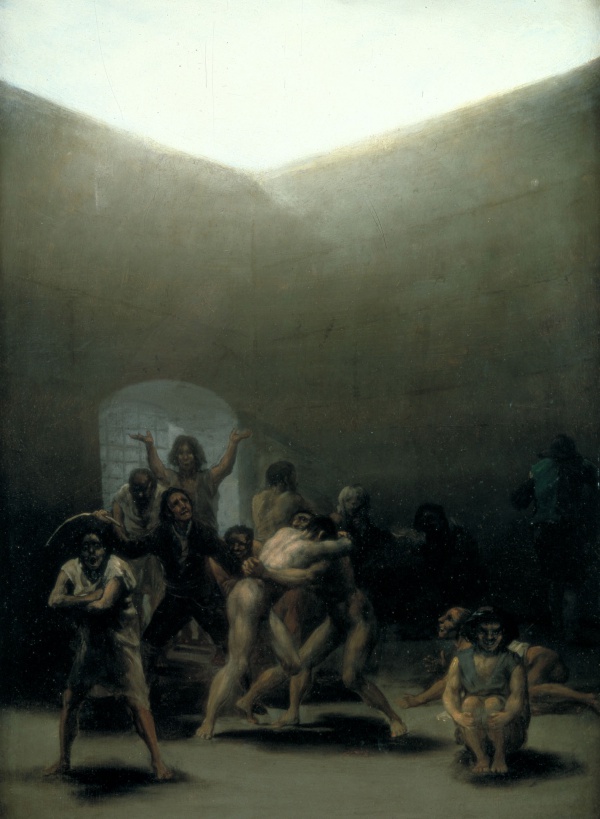Facts About Yard with Lunatics
"Yard with Lunatics" is a small yet powerful oil painting on tinplate by the renowned artist Francisco Goya, created between 1793 and 1794. This haunting piece portrays a scene inside a lunatic asylum, inspired by Goya's observations during his youth in Zaragoza. It marks a significant turning point in his career, initiating his shift towards darker, more introspective themes that mirrored his own fears of mental illness and physical decline. At the time of creating this series, Goya was grappling with poor health and a nervous breakdown.
In contrast to traditional depictions of mental illness, Goya's "Yard with Lunatics" offers a grim view of human suffering. The painting starkly portrays the harsh treatment and neglect common in asylums during that era. Through his work, Goya critiques the brutal conditions faced by the mentally ill and denounces societal attitudes towards them.
There is much speculation about Goya's own health issues, with theories ranging from viral encephalitis to Ménière's disease, but no definitive diagnosis exists. His fear of madness and his struggles with both mental and physical health are believed to have profoundly influenced his art during this period.
"Yard with Lunatics" is considered a pivotal work in Goya's artistic journey, showcasing his transition to a more somber and reflective style. Today, this significant painting is housed in the Meadows Museum in Dallas, thanks to a donation by Algur H. Meadows in 1967.

 Mexico
Mexico